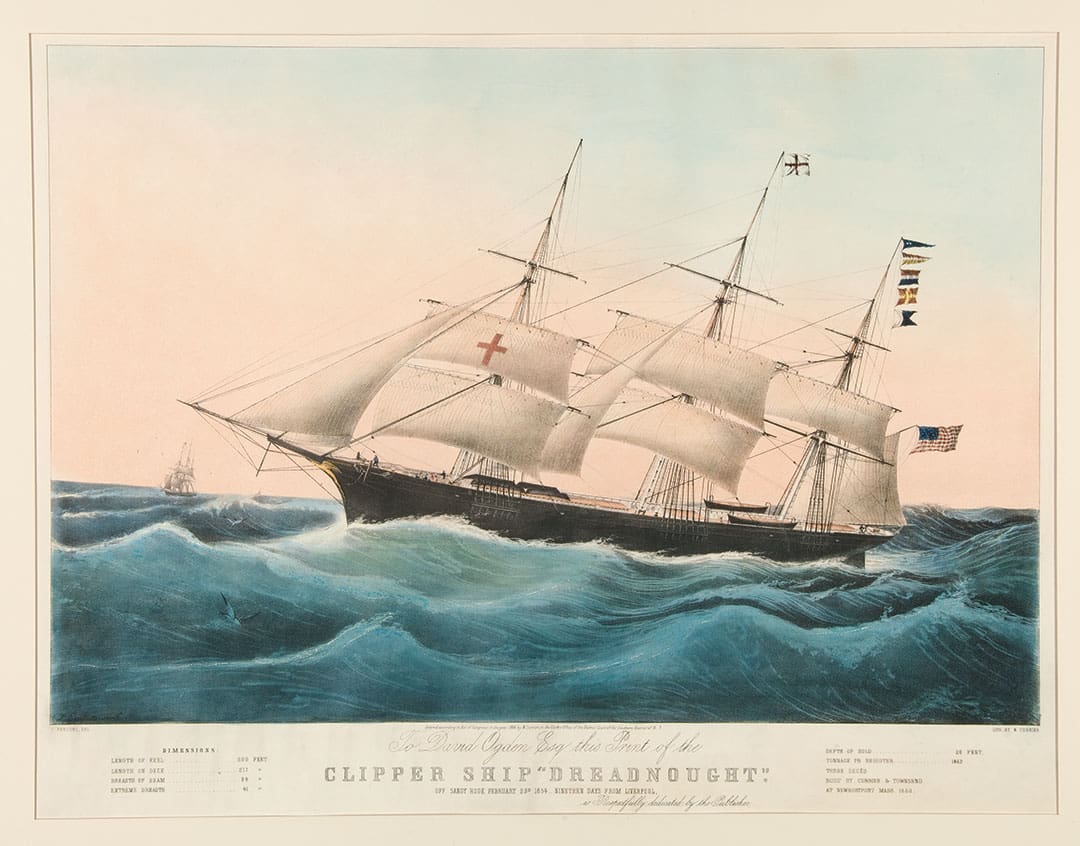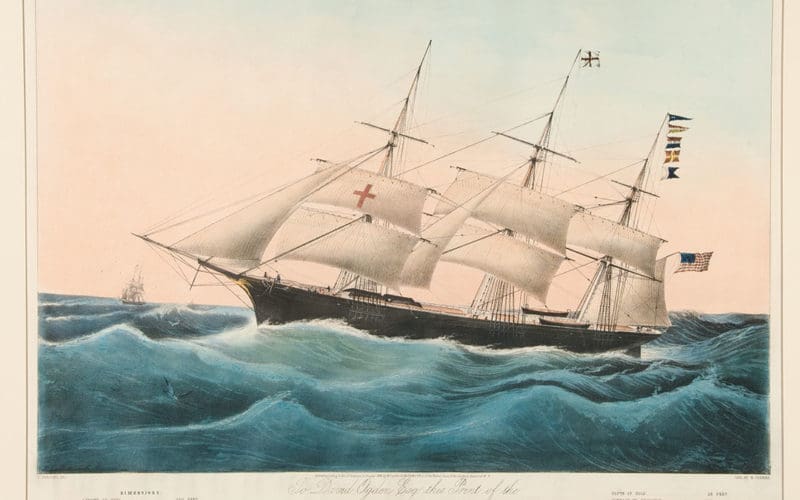
Dreadnought, was one of the most famous of all the clipper ships, built in 1853 in the shipyard of Currier and Townsend in Newburyport, Mass. Measuring 212 feet LOA with a 41-foot beam rigged as a barque, Dreadnought was built for the Red Cross Line of New York, one of the many packet companies that revolutionized passages across the Atlantic, usually from New York to Liverpool. Packets began as a business as early as 1817, carrying mail, goods and passengers, running on the first regular schedules. Dreadnought could carry as many as 200 passengers both in steerage and in cabins.
The captain most associated with Dreadnought was Samuel “Bully” Samuels. In contemporary press Dreadnought was referred to as “the wild boat of the Atlantic” in an age when risk taking was commonplace for both money and bragging rights. Before her demise, Dreadnought made 31 round trips between New York and Liverpool between 1853 and 1864. Average time for a passage was 19 days eastward and 26 1/2 days westward.
In November, 1854 Dreadnought made a passage from Sandy Hook to Ireland in 12 days and 12 hours. In 1855, sailing from New York, Dreadnought under Samuels made 1,080 nautical miles in the first 72 hours. During those first 72 hours the ship was averaging a little less than 15 knots in November across the Atlantic.
Though it is disputed, in 1859 Dreadnought claimed to have made an incredible passage from Sandy Hook to England in nine days 17 hours, a distance of about 3,100 nm averaging 13 plus knots. The most amazing tale of this ship though takes place in January 1863. Under the command of Captain Samuels, Dreadnought departed Liverpool bound for New York and five days out encountered a severe winter gale, losing her rudder. Captain Samuels at the same time had his leg broken and was almost washed overboard. A jury-rigged rudder couldn’t be built and the ship had to be sailed backwards to the Azores where it took 52 days to repair.
In 1869, on a passage to San Francisco from Liverpool under the command of Captain P. N. Mayhew, Dreadnought was caught in calms and drifted off Tierra del Fuego. The ship went aground and was wrecked, although all hands were rescued.
For the navigation problems we will attempt a three-star fix using selected stars HO249, Volume I, and the 2022 Nautical Almanac. We’ll include the LHA of the stars in question. We’ll also include the Ho.
The DR of Dreadnought on May 15, 1869, is S 45° 28’ by W 49° 6’ minutes. We’re doing a morning star sight at nautical twilight. Height of eye is 20 feet. There is no index error.
The LHA of Aries is 324°. Diphda’s Ho is 42° 19’; Rigel Kent’s is 32° 58’; Altair’s is 31° 01’. We’ll use the same time for each of the three shots. And an assumed position will be the same for all three shots at S 45° by W 49° 04.4’.
We want to plot our stars and find the fix. We’ll ignore precession and nutation in the plotting of our problem.
What is the fix position?

